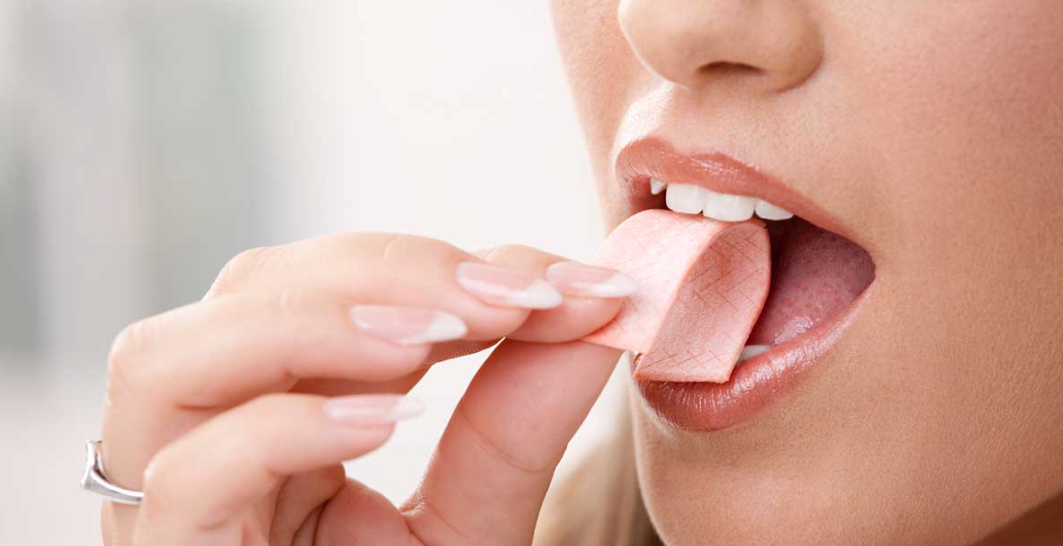Learn More About Chewing Gum
 Look for the ADA Seal—your assurance that the product has been objectively evaluated for safety and efficacy by an independent body of scientific experts, the ADA Council on Scientific Affairs.
Look for the ADA Seal—your assurance that the product has been objectively evaluated for safety and efficacy by an independent body of scientific experts, the ADA Council on Scientific Affairs.
What is chewing gum?
Chewing gum in various forms has been around since ancient times. The Greeks chewed sap from the mastic tree, called mastiche. On the other side of the world, the ancient Mayans favored the sap of the sapodilla tree (called tsiclte). Native Americans from New England chewed spruce sap—a habit they passed on to European settlers. Today, the base used for most gum products is a blend of synthetic materials (elastomers, resins and waxes in various proportions). However, chewing gum is as popular as ever. Consumers may be used to thinking about chewing gum as a kind of candy, but this category of the ADA Seal recognizes chewing gum that has demonstrated scientifically that it can protect the teeth.
What does chewing gum do?
The physical act of chewing increases the flow of saliva in your mouth. If you chew after eating, the increased salivary flow can help neutralize and wash away the acids that are produced when food is broken down by the bacteria in plaque on your teeth. Over time, acid can break down tooth enamel, creating the conditions for decay. Increased saliva flow also carries with it more calcium and phosphate to help strengthen tooth enamel. Clinical studies have shown that chewing sugarless gum for 20 minutes following meals can help prevent tooth decay. In the future, look for chewing gum that delivers a variety of therapeutic agents that could provide additional benefits to those provided by the ability of gum to mechanically stimulate saliva flow. For instance, some gum might contain active agents that could enhance the gum’s ability to remineralize teeth and reduce decay, or enable gum to help reduce plaque and gingivitis.
Does chewing gum replace brushing and flossing?
No, chewing gum is an adjunct to brushing and flossing, but not a substitute for either. The ADA recommends brushing twice a day with a fluoride toothpaste and cleaning plaque from between your teeth once a day with dental floss or other interproximal dental cleaners.
What is in chewing gum and how is it made?
Chewing gum typically consists of:
- Gum base
- Artificial sweeteners (such as aspartame, sorbitol or mannitol)
- Softeners (glycerin or other vegetable oil products)
- Flavorings and colorings
The process for making chewing gum has six basic steps:
- Gum base ingredients are melted together
- Other ingredients are added until the warm mix thickens like dough
- Machines called extruders are used to blend, smooth and form the gum
- The gum is shaped (flattened or molded into tablet shapes and coated)
- The gum is cooled for up to 48 hours in a temperature controlled room
- The gum is packaged.
How does chewing gum get the Seal?
A company earns the ADA Seal by demonstrating that its product meets the requirements for safety and efficacy for Sugar-free Chewing Gum. Efficacy may include one or more specific indications, such as reducing plaque acids, promoting remineralization of tooth enamel, reducing cavities and/or reducing gingivitis. Studies must also show that the gum is safe to oral tissues. The manufacturer must provide the results of both laboratory studies and clinical studies in humans.
Does the ADA award its Seal to sugar-containing gum?
To date, the only gum with the ADA Seal are sugarless. They are sweetened by non-cavity causing sweeteners such as aspartame, sorbitol or mannitol. Chewing sugarless gum has been shown to increase the flow of saliva, thereby reducing plaque acid, strengthening the teeth and reducing tooth decay. Of course, chewing sugar-containing gum also increases saliva flow, but it also contains sugar which is used by plaque bacteria to produce decay-causing acids. Further research needs to be done to determine the effects of chewing sugar-containing gum on tooth decay.
Why look for chewing gum that displays the ADA Seal?
The Seal is your assurance that the Sugar-free Chewing Gum has met the ADA criteria for safety and efficacy. You can trust that claims made on packaging and labeling for ADA-Accepted products are true, because companies must verify all of the information to the ADA. Look for the ADA Seal because products with the ADA Seal say what they do and do what they say.
For the full article, click here http://www.ada.org/en/science-research/ada-seal-of-acceptance/product-category-information/chewing-gum
